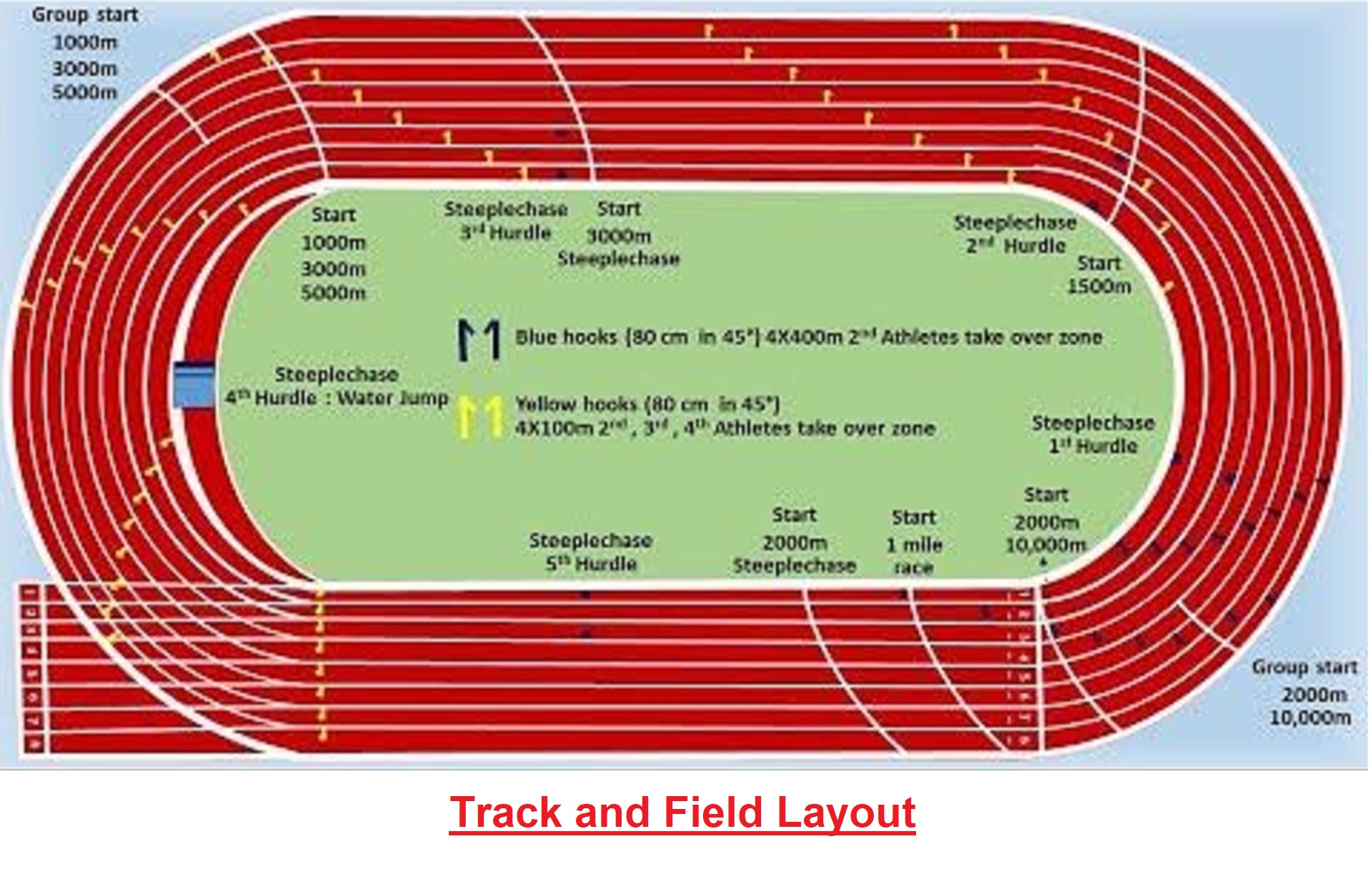Track and field or Athletics is a sport that includes different types of events based on running, jumping, and throwing skills.
The name track and field is derived from where the sports take place running in track and field for the jumping and throwing events. Track and field or athletics also include road running, cross-country running, race walking, and marathons.
The track includes all the running events, that is Sprints, Middle-distance races, Long-distance races, Relay races, Hurdle races, Race walk, and Marathons. All events in track and field are individual but relay races are the only team game in track and field or athletics.
The field includes all the jumping and throwing events because these events are organized only in the field. Jumping events include the Long Jump, Triple Jump (Horizontal Jump), High Jump, and Pole Vault (Vertical Jump). Throwing events include Shot Put, Discuss Throw, Hammer Throw, and Javelin Throw.
There are also organized combined events or multi-events in track and Field such as Heptathlon for women, and Decathlon for men.
History of Track and Field
Table of Contents
Track and field is one of the oldest sports. In ancient times it was an event held during festivals such as the Ancient Olympic games in Greece. But during modern times there are two most prestigious competitions the Olympic Games and the World Athletics Championship.
The sport of track and field or Athletics has prehistoric roots being the oldest sporting competitions such as running, jumping, and throwing.
Origin of the events-
Ancient athletics were found around 1800 B.C. in Ireland including running and stone throwing events. Proof of these events was found in the wall of a cave in Ireland as a wall painting after carbon dating analysis of these wall paintings were found too old.
The first track and field events were recorded in the Ancient Olympic Games at Olympia, Greece in years 776 B.C.
Track and field events were also present at the Panhellenic Games in Greece during ancient times and it spread to Rome and Italy around 201 B.C. During the Middle Ages, new track and field or athletics events were introduced in the part of Northern Europe.
Stone Put and weight Throw competitions were popular among the Celtic Society, in Ireland and Scotland. Such events now developed into as Shot Put and Hammer Throw.
The Pole Vault event also developed in North European Lowlands during the 18th century.
Measurements and Marking
There are two types of tracks found- 1. Standard Track and 2. Non-Standard track
Standard Track
This type of track is an official track and each measurement related to this track is decided by the Athletics Association (IAAF). All the National, International, and Olympic competitions are organized in this track only. The shape of the Track and Field is oval that is a track and the inner side of the track area is called the field. The measurement of the track is 400 meters.
But in ancient times the lengths of the tracks varied: the Panathinaiko Stadium measured 333.33 meters from the 1896 Verano Olympics, while at the 1904 Olympics, the distance was a third of a mile (536.45 m) at Francis Field. As it rolled out the sport, the IAAF standardized the length to 400m and established that tracks had to be divided into another path for running. It is precisely established for trolleys, as well as standards for track curvature.
Planned celebrity tracks were popular in the early 20th century, but synthetic tracks became standard by the late 1960s. 3M’s Tartan track (a polyurethane track for running for all climate types) won in popularity after its use in US Olympic trails in 1968 and the 1968 Summer Olympics and it began the process for the synthetic tracks to be converted into the standard for this sport.

Non-Standard Track
200-meter track known as a non-standard track. This type of track is built in those places where enough land is not available. Local athletics competitions are organized in this type of track or small school where enough land is not available to build this type of non-standard track.

